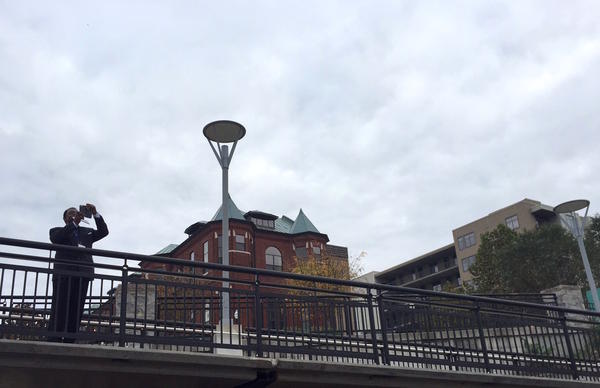
Rolling Mill Hill — the housing development on a bluff that overlooks downtown Nashville — will soon double in size to more than 700 apartments. It was showcased this week during the League of Cities conference.
Out-of-town officials learned about how its old buildings were reinvigorated and how people with drastically different incomes live side by side as neighbors.
The hill’s expansive view of the Cumberland River acted like a magnet for camera phones among the visitors. The cityscape is a perk of Rolling Mill Hill, which sprouted up from nothing in recent years as an intentionally mixed-income neighborhood.
Some apartments managed by the Metropolitan Development and Housing Agency rent for $600 for a one-bedroom, while market-rate units next door go for more than $2,000.
That proximity surprised Jerry Jones, a regional planner from Louisiana.
“I’ve never witnessed where those two class of individuals can live together within walking distance of one another,” Jones said. “It has me a little puzzled. … It really shows the progressive mindset of Nashville.”

Walking with Jones, Christina Rinderly interjected. She’s the mayor pro tempore for Durango, Colorado. Her city requires that 14 percent of all new projects be affordable units — a policy Nashville is considering — and she’s seen mixed-income developments foster neighborly bonds.
“What we’ve seen is a really great mix of socioeconomic statuses, so you actually are living next door to your teachers, your policemen,” she said. “What we’re trying to do is make sure people aren’t priced out of the community and that we actually are a real community.”
Two of the six buildings on Rolling Mill Hill are only open to residents with below-average income. And for the high-end units, there were initial doubts that anyone would ever want to live on that hill next to downtown, said John Tirrill, whose company, SWH Residential Partners, built them.
“I had several investors that I went to talk to, to invest in this, that just turned me down flat. They said, ‘John, this is just out in the middle of nowhere. It’s downtown. This isn’t gonna happen,’ ” he said.
That was just five years ago. But demand is so high they’re about to
break ground on another 245 units to reach that 700 total. After that, more development is anticipated on the adjacent Rutledge Hill, now home to several businesses that occupy the “trolley barns.”



